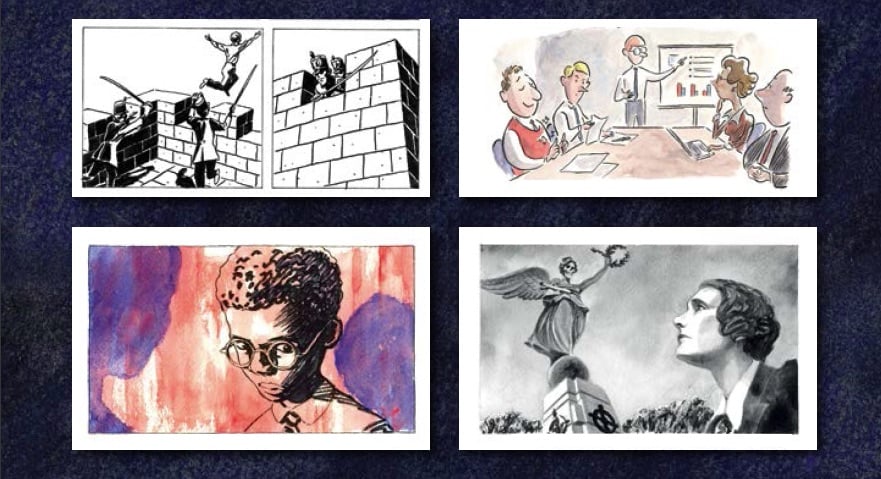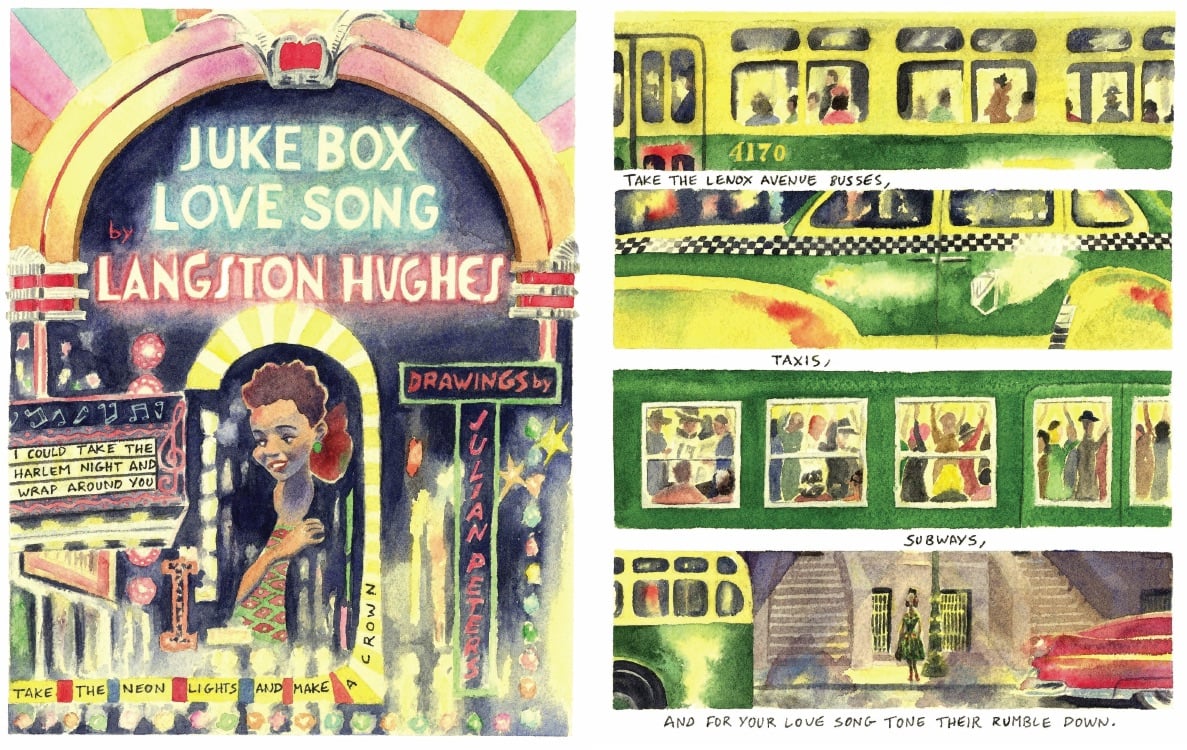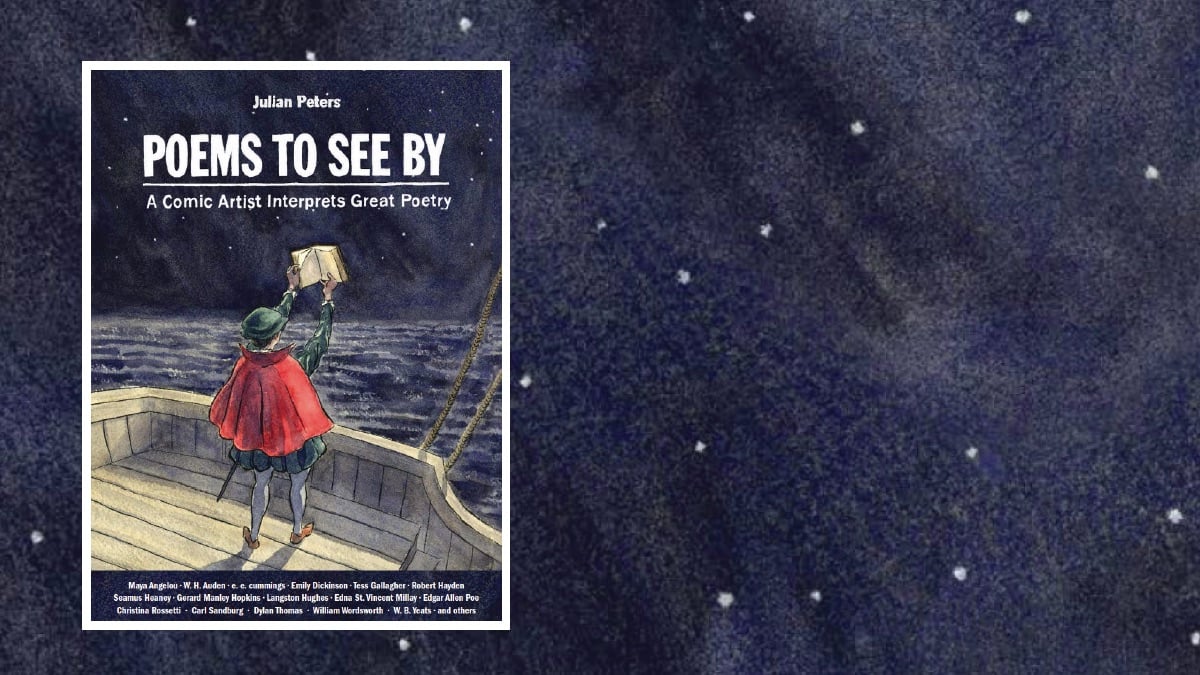
It is often said that a picture is worth a thousand words, but the right words can paint a thousand pictures in your head.
One of the most wonderful things about poetry it the melodic way it uses words to paint these images, whether they be colorful dreams of fantasy, more realistic depictions of a time and place in history, of a verbal study of a culture or person.
That image is completely unique to every reader, and for visual artists like Montreal-based cartoonist Julian Peters, that vision can be put on paper for others to experience alongside their own interpretations.
On March 31, Peters released a new anthology, Poems to See By: A Comic Artist Interprets Great Poetry, just in time for National Poetry Month in April. Peters has taken a diverse selection of works by 24 writers and created his own visual interpretations for some of their most beloved poems, each using a different artistic style.
Peters explained in the preface that, although poetry and comics may not seem like a likely pairing, they actually share a number of common elements.
“In setting out to turn beautiful poetry into comics, I wanted to pay tribute to the way these poems made me feel, to spend time with them, to pull them in as close to me as possible in the way that, as someone who draws comics, felt the most natural,” he said.
Poets featured in the anthology include Maya Angelou, Elizabeth Bishop, e. e. cummings, Emily Dickinson, Thomas Hardy, Gerard Manley Hopkins, Langston Hughes, Edna St. Vincent Millay, and Edgar Allen Poe, along with many others.
The works are compiled under different ways poems help us “see” things: Seeing Yourself or Others, such as Maya Angelou’s “Caged Bird,” Seeing Art, as with Langston Hughes’ “Juke Box Love Song,” Seeing Nature in works like Tess Gallagher’s “Choices,” Seeing Time as in Robert Frosts’s “Birches,” and finally, Seeing Death with Emily Dickinson’s “Because I Could Not Stop for Death,” just to name a few.
As with most anthologies, the reader doesn’t have to read these in order but can skip back and forth to favorite poems. I went directly towards the final poems in the to the book for Peters’ take on “Annabel Lee,” a lament by one of my favorite authors, Edgar Allan Poe. Peters’ decision to use simple black-and-white illustrations seemed like something Poe himself would have chosen.
My next stop was back towards the beginning to read Angelou’s “Caged Bird,” as this is one I have read in several classes and have seen interpreted many times in both dramatic readings and dance. Unlike his Poe drawings, he gave this one the very colorful, flowing watercolor treatment by painting quilt-like images to match the words.
The most surprising choice to me was seeing W. B. Yeats’ “When You Are Old” interpreted in manga style. I suspect this is one to which younger readers will immediately be drawn, which is quite an achievement. I wouldn’t otherwise say that about this particular melancholy piece on aging by a turn-of-the-century Irish poet.
Other standouts included the stark black-and-white watercolors images used on Edna St. Vincent Millay’s “Conscientious Objector,” the light-hearted cartoon look of e.e. cumming’s “May My Heart Always Be Open,” and being able to take Ezra Pound’s couplet, “In a Station of the Metro,” and give it a Japanese haiku style look with a current-day twist

One aspect I appreciated was that Peters included the poems on their own following his illustrated interpretations. This way, readers who are unfamiliar with the works can read them and create their own mental pictures as well. Whether it is a music video, a movie version of a favorite novel, or these illustrated poems, I am always an advocate for using one’s own imagination to bring a story to life. By including these poems in their original format, Peters is allowing readers to do just that.
Peters hopes this book not only appeals to poetry lovers but also to educators wanting to get students excited about to world of poetry.
“In the years since I began creating such works, I have often been contacted by teachers who tell me they are using them in their poetry classes,” Peters said. “I’m delighted to think that one of my comics may have helped students to better understand a poem, or perhaps clarify their own interpretation of a poem, even if it differs significantly from my own, which is obviously only one of thousands.”
Poems to See By: A Comic Artist Interprets Great Poetry is now available in bookstores, including their online services, as well as directly from the publisher in both hardcover and eBook at Plough.com.
Lisa received a PDF copy of the book for review purposes.



